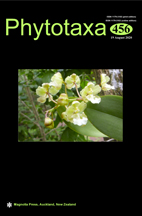Abstract
Hebeloma radicosum, known for its long ‘root’ and membranous ring, has regularly been recorded in Japan and been the subject of many studies revolving around ectomycorrhizal fungi exposed to high levels of nitrogen compounds and tripartite associations between fungi, host trees and mammals, including moles, wood mice and shrews. However, the species recorded in Japan is in fact not H. radicosum but a closely related species, also in Hebeloma section Myxocybe, described here as Hebeloma sagarae. This mushroom is macroscopically very similar to Hebeloma radicosum, also with a long ‘root’ and membranous ring, but distinct molecularly and in its distribution. We also examine other ‘rooting’ Hebeloma species from Japan: H. luchuense and H. radicosoides; both are shown to be members of H. sect. Scabrispora. A fourth ‘rooting’ Hebeloma from Japan is shown to be the same as or a close relative of Hebeloma danicum originally described from Europe.

